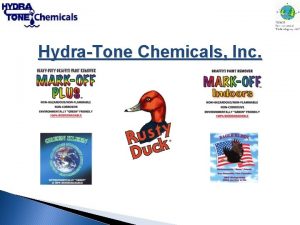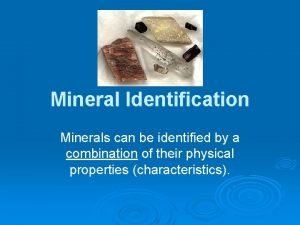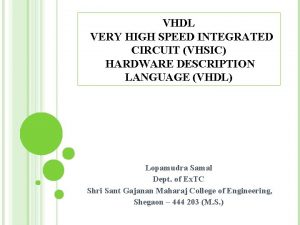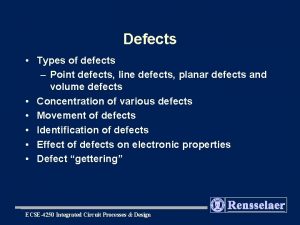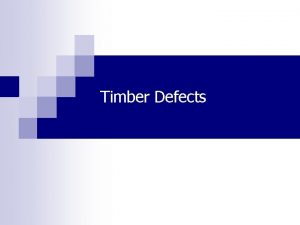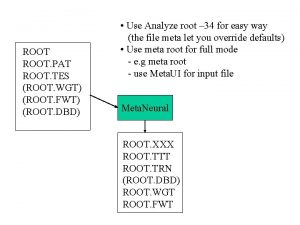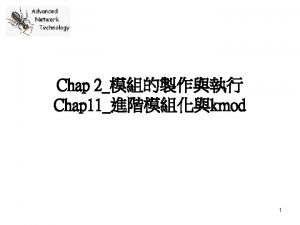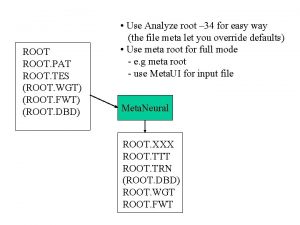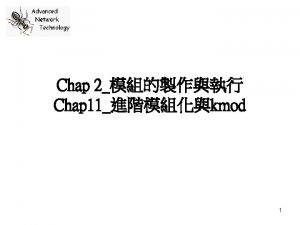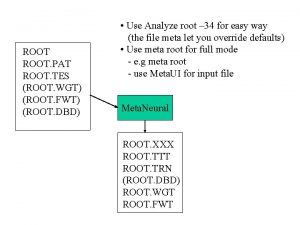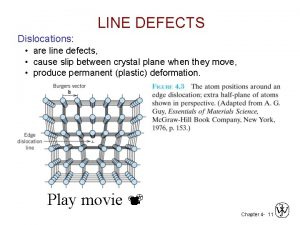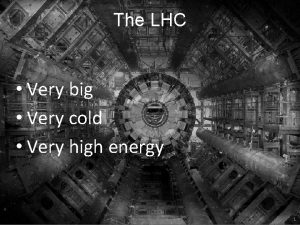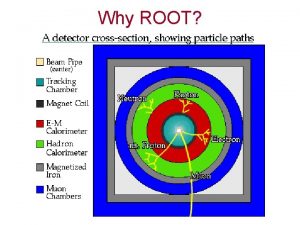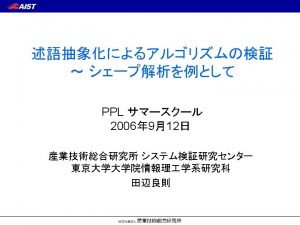Defects Cause Root Cause Rusty charge very high












![Requirements for cast-on sample as per standard DIN 1563 -2003 -02[5] Walll Material Requirements for cast-on sample as per standard DIN 1563 -2003 -02[5] Walll Material](https://slidetodoc.com/presentation_image/1e96560c6c406bd8c452cc62540a5da7/image-13.jpg)






- Slides: 19

Defects & Cause. Root Cause Rusty charge: very high chilling tendency in this iron low content of CE EFFECT OF SUPERHEATING Shrinkage Metal Holding Excess magnesium Under inoculation or over inoculation High Pouring temp High Purity charge materials Metal Holding Chunky graphite High CE High %RE(rare earth) High Pouring Temp Poor Charge Mix Mech Failure Fadding ELEMENT SEGREGATION TENDENCY Blow Hole Low Pouring Temp Rusty charge materials Slag inclusion Poor Pouring Practice

Types of shrinkage Decrease in volume of the metal as it solidifies Outer sunks: Outer sunks (pull downs, sinks) can be seen from the outside of the casting, usually as a smooth depression in the casting surface. Macro shrinkage: Macro shrinkages are usually found inside the casting and close to heat centers. They appear as larger holes, Defect size >5 mm Micro shrinkages: Micro shrinkages are smaller cavities . with irregular surfaces Defect size <3 mm also called porosity

Shrinkage u Rusty charge: very high chilling tendency in this metal u High Magnesium: Very high chilling tendency in this metal High magnesium content acts to promote carbidic microstructures and increase shrinkage

Shrinkage Effect of Superheating: the temperature of any melt is increased above the normal melt temperature (high superheat), nucleation has been reduced. Holding: The longer the hold times, at any temperature, the greater the loss of nucleation.

Shrinkage Under inoculation: Not enough to precipitate Carbon as a graphite Over inoculation: Too many nucleation points are active early in the solidification feeders become inactive and contraction takes place, there is no graphite

Chunky Graphite Entrapment of gases in the cavity while pouring. Occurrence: were the casting thickness is more High RE: Excessive cerium in the metal will cause the chunky graphite. Wall thickness < 25 mm Ce 0, 020 – 0, 015 % 25 – 50 mm Ce 0, 015 – 0, 010 % 50 – 100 mm Ce 0, 010 – 0, 005 % 100 – 250 mm Ce 0, 005 – 0, 002 % 250 mm Ce 0, 002 – 0, 000 % High Purity Charge material: Charge more than 50% sorrel PI cause there is no trace element eg: Pb, Bi, Sb etc High Pouring Temp & Holding: Both will affect the nucleation of SG to form CHG. High CE: Increased volume of the graphite

Mechanical Failure Exploded Graphite Excess, rare earths can cause exploded graphite. u u At very high carbon equivalent (CE). Exploded graphite is normally found in thicker section castings with slow cooling rates. High purity charges are used which are low in detrimental tramp elements such as lead, bismuth, antimony, titanium etc

Mechanical Failure Graphite Flotation u u At very high carbon equivalent (CE). The nodules, being of a lower density than the matrix, tend to float towards the surface of the casting.

CE s h r i n k a g e V 1/V V 2/V

Slag Inclusion A product resulting from the action of a flux on the oxidized non metallic con stituents of molten metals. Occurrence: Any place of the casting Rusty Charge: Material Charge Mix steel Charge containing oxide products u (e. g: Rust CRS & Borings), that one oxidize the metal. it will cause Heavy slag formation in the metal. u Pouring Practice: Slag should be removed thoroughly. Metal level should be maintained 75% of basin capacity during the pouring. Min 300 Kg metal maintained in the Basin Slag 1 -2% DI Returns 5 -10% Pig iron 0. 12% rusty scrap 12% Borings 25%

Dross Non metallic inclusion is called Dross Occurrence: Surface of the casting Non metallic inclusion: Excess residual Mg (>0. 050%)in the metal • react with oxygen & sulphur to form Mgo, Mgs respectively. It will appear on the surface of the casting. • Low pouring Temp: mg easily react with Si to form Mgsi 2 (During Inoculations) Turbulence: Rapid flow of metal into the mould • Will cause Dross

Blow Hole Entrapment of gases in the cavity while pouring. Occurrence: Any place of the casting Low Pouring Temp: Gas molecules not easily escape from the mould at low temp. Ti & Al content in metal: it will promote the evolution of the gas in the metal.
![Requirements for caston sample as per standard DIN 1563 2003 025 Walll Material Requirements for cast-on sample as per standard DIN 1563 -2003 -02[5] Walll Material](https://slidetodoc.com/presentation_image/1e96560c6c406bd8c452cc62540a5da7/image-13.jpg)
Requirements for cast-on sample as per standard DIN 1563 -2003 -02[5] Walll Material designation EN-GJS-350 -22 U-LT Impact at - 40 ± 2℃ EN-GJS-400 -18 U-LT Impact at - 20 ± 2℃ Min. tensile Min. Yeild strength(N /mm 2) strength(N/ mm 2) Impact Mea n(J) Impact Individual (J) < 30 12 9 350 22 30 < t ≤ 60 12 9 330 210 18 60 < t ≤ 200 10 7 320 200 15 < 30 12 9 400 240 18 30 < t ≤ 60 12 9 390 230 15 60 < t ≤ 200 10 7 370 220 12 thickness, t(mm) % Elong

Mechanical Failure The following Metallurgical defect Can cause the Mechanical failure. 1. Fading 2. Exploded Graphite 3. Chunky Graphite 4. Compacted Graphite 5. Graphite Flotation 6. Spiky Graphite

Mechanical Failure Fading u u u Holding the metal after treatment will cause Fading High Sulphur content in the bath Inadequate inoculation

Mechanical Failure Compacted Graphite u u Incorrect weighing of the nodulariser. Although a long holding time in the ladle or excessive temperatures.

Mechanical Failure Spiky Graphite u Excess, Trace elements such as lead, bismuth, titanium and antimony present in the metal to form Spiky Graphite.

Grey & SG iron ASTM A 48 (Class 30, 35, 40? Gray Iron Castings ASTM 159 or SAE J 431 ( G 4000, G 3500, G 3000, G 2500, G 1800) Automotive Gray Iron Castings ASTM A 319 Class I, III Gray Iron Castings for Elevated Temperatures ASTM A 436 (DIN 1694, BS 3468) Ni-Resist Castings, Austenitic Gray Iron Castings DIN 1691 (GG 10, GG 15, GG 20, GG 25, GG 30, GG 35) EN 1561 (EN-GJL-200, EN-GJL-250, EN-GJS-300, EN-GJS-350, EN-GJS-400, EN-GJS-500, EN-GJS-600, EN-GJS-700) , ISO 185 SG IRON ASTM A 536 (60 -40 -18, 65 -45 -12, 80 -55 -06? 100 -70 -03, 400 -15, 500 -7, 600 -3) Ductile Iron Casting ASTM A 439 (DIN 1694, BS 3468) Austenitic Ductile Iron ASTM A 897 Austempered Ductile Iron ADI ASTM A 571 Low Temp, Pressure-Containing DIN 1693 (GGG-30, GGG-40, GGG-50, GGG-60, GGG-70, GGG-80) EN 1563 (EN-GJS-400 -15, EN-GJS-450 -10, EN-GJS-500 -7, EN-GJS-600 -3, EN 1563 EN-GJS-400 -18 -LT) SAE J 434(D 4018, D 4512, D 5506? D 5504? D 7003, D 700, D 800, D 400) ISO 1083, BS 2789

 Figure 10
Figure 10 Used to express very large or very small numbers
Used to express very large or very small numbers Few fewfewf
Few fewfewf Receiving table/area
Receiving table/area Quantifier of food
Quantifier of food Rusty duck gun cleaner
Rusty duck gun cleaner Rusty heat exchanger
Rusty heat exchanger Suction line heat exchanger
Suction line heat exchanger End rhyme examples
End rhyme examples Base stealer poem
Base stealer poem What property of matter that describes a rusty anchor.
What property of matter that describes a rusty anchor. Dashing through the snow in a rusty holden ute
Dashing through the snow in a rusty holden ute Rusty and the ayres rockettes band members
Rusty and the ayres rockettes band members A pile of rusty iron filings homogeneous or heterogeneous
A pile of rusty iron filings homogeneous or heterogeneous This determines the heaviness of a mineral
This determines the heaviness of a mineral Small basic projects
Small basic projects Oht11
Oht11 Difference between charge and electric charge
Difference between charge and electric charge Electrons flowing
Electrons flowing Vhsic
Vhsic





